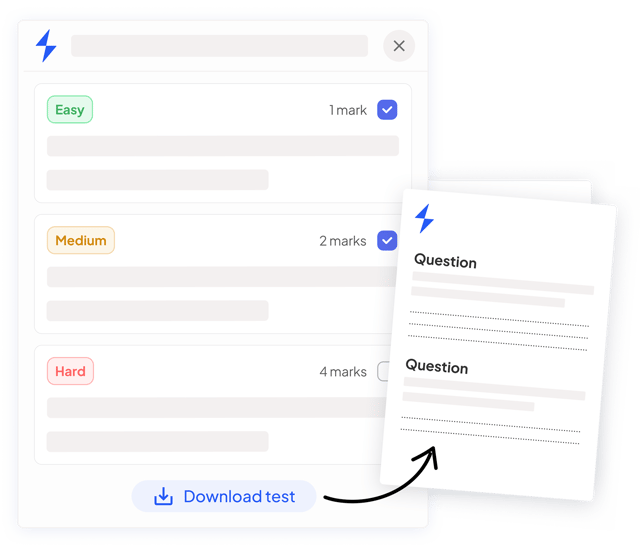Light-dependent Reactions (Edexcel A Level Biology (A) SNAB): Revision Note
Exam code: 9BN0
Light-dependent Reactions
Photosynthesis takes place in two distinct stages
The light-dependent reactions, which rely on light directly
The light-independent reactions, which do not use light directly, though do rely on the products of the light-dependent reactions
Both these sets of reactions take place within the chloroplast
The light-dependent reactions take place across the thylakoid membrane
The light-independent reactions take place in the stroma
Light energy in the light-dependent reactions enables the splitting of water molecules in a reaction known as photolysis
Photolysis of one molecule of water, or H2O, produces
2 hydrogen ions (2H+), also known as protons
2 electrons (2e-)
One atom of oxygen (O)
The hydrogen ions and electrons are used during the light-dependent reactions while the oxygen is given off as a waste product
During the light-dependent reactions light energy is converted into chemical energy in the form of ATP and reduced NADP
NADP is a type of molecule called a coenzyme; its role is to transfer hydrogen from one molecule to another
When NADP gains hydrogen, it is reduced and can be known as either reduced NADP or NADPH
Remember that
Reduction is gain of electrons, gain of hydrogen, or loss of oxygen
Oxidation is loss of electrons, loss of hydrogen, or gain of oxygen
Reduced NADP can reduce other molecules by giving away hydrogen
NADP can oxidise other molecules by receiving hydrogen
The useful products of the light-dependent reactions, ATP and NADPH, are transferred to the light-independent reactions within the chloroplast

The products of the light-dependent reaction are ATP, NADPH, and oxygen. Oxygen is given off as a waste product while ATP and NADPH pass to the light-independent reactions. The ADP and NADP produced during the light-independent reaction can pass back to the light-dependent reactions to allow more ATP and NADPH to be produced.
Production of ATP and NADPH
ATP and NADPH are produced during the light-dependent reactions as a result of a series of events that occur on the thylakoid membrane known as photophosphorylation
Photo = light
Phosphorylation = the addition of phosphate; in this case to ADP to form ATP
Two types of photophosphorylation take place
Non-cyclic photophosphorylation
This produces both ATP and NADPH
Cyclic photophosphorylation
This produces ATP only
Both cyclic and non-cyclic photophosphorylation involve
A series of membrane proteins which together make up the electron transport chain
Electrons pass from one protein to another along the electron transport chain, releasing energy as they do so
Chemiosmosis
The energy released as electrons pass down the electron transport chain is used to produce ATP
Non-cyclic photophosphorylation
Light energy hits photosystem II in the thylakoid membrane
It is slightly confusing that photosystem II comes first in this sequence; the numbers simply reflect the order in which the photosystems were discovered
Two electrons gain energy and are said to be excited to a higher energy level
The excited electrons leave the photosystem and pass to the first protein in the electron transport chain
As the excited electrons leave photosystem II they are replaced by electrons from the photolysis of water
The electrons pass down the chain of electron carriers known as an electron transport chain
Energy is released as the electrons pass down the electron transport chain which enables chemiosmosis to occur
H+ ions are pumped from a low concentration in the stroma to a high concentration in the thylakoid space, generating a concentration gradient across the thylakoid membrane
H+ ions diffuse back across the thylakoid membrane into the stroma via ATP synthase enzymes embedded in the membrane
The movement of H+ ions causes the ATP synthase enzyme to catalyse the production of ATP
At the end of the electron transport chain the electrons from photosystem II are passed to photosystem I
Light energy also hits photosystem I, exciting another pair of electrons which leave the photosystem
The excited electrons from photosystem I also pass along an electron transport chain
These electrons combine with hydrogen ions from the photolysis of water and the coenzyme NADP to form reduced NADP
H+ + 2e- + NADP+ → NADPH
The reduced NADP and the ATP pass to the light-independent reactions



Non-cyclic photophosphorylation involves photosystems I and II and produces both ATP and NADPH
Cyclic photophosphorylation
Light hits photosystem I
Electrons are excited to a higher energy level and leave the photosystem
The excited electrons pass along the electron transport chain, releasing energy as they do so
The energy released as the electrons pass down the electron transport chain provides energy to drive the process of chemiosmosis
H+ ions are pumped from a low concentration in the stroma to a high concentration in the thylakoid space, generating a concentration gradient across the thylakoid membrane
H+ ions diffuse back across the thylakoid membrane into the stroma via ATP synthase enzymes embedded in the membrane
The movement of H+ ions cause the ATP synthase enzyme to catalyse the production of ATP
At the end of the electron transport chain the electrons rejoin photosystem I in a complete cycle; hence the term cyclic photophosphorylation
The ATP produced enters the light-independent reaction

Cyclic photophosphorylation involves Photosystem I and produces ATP
Ready to test your students on this topic?
- Create exam-aligned tests in minutes
- Differentiate easily with tiered difficulty
- Trusted for all assessment types

Did this page help you?